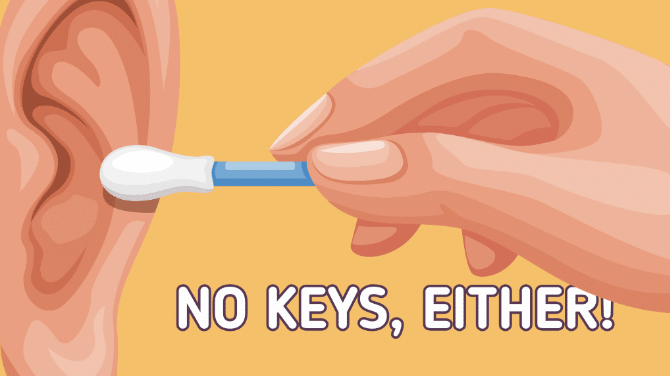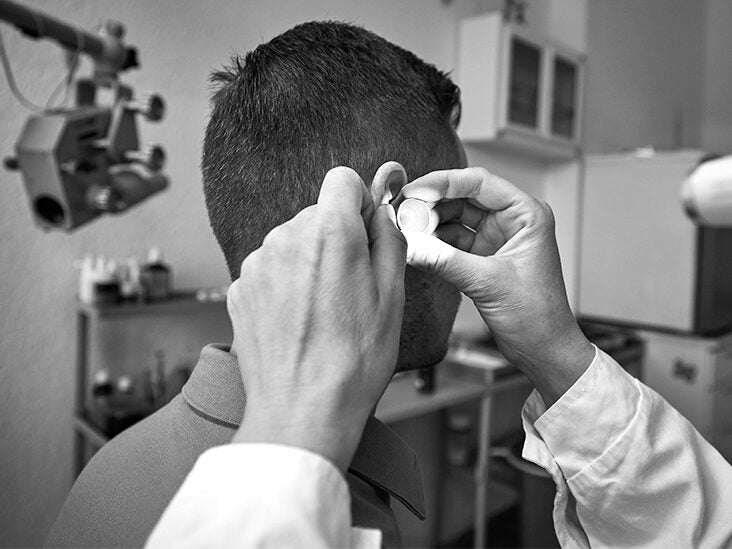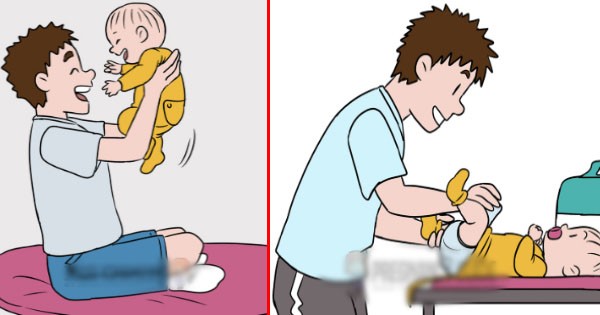
Ear infections are often associated with children, but did you know that they can also affect adults? In fact, 20% of adults still experience ear infections. Bacteria and viruses don’t discriminate based on age.
It’s important for those with weak immune systems or ear inflammation to be vigilant and recognize the signs early for quick treatment. In this article, we’ll explore six crucial signs of an ear infection, as well as prevention tips to protect your hearing.

1. Itchiness
One of the initial signs of an ear infection is mild itchiness in the inner ear canal. If left untreated, this itchiness can worsen over time. If you find yourself frequently itching your ears, it may be worth consulting your doctor to rule out an infection. Remember, early detection is key to swift treatment and relief.

2. Redness
As an ear infection progresses, redness can begin to develop both inside and outside the ear. This redness is a clear sign of inflammation and should not be ignored. If you notice any unusual redness in or around your ears, it’s important to take it seriously and seek medical advice.
3. Discomfort or Pain
Ear pain is a common symptom of an ear infection, especially in the early stages. You may experience general discomfort or aching in your ear, particularly when manipulating the earlobe or tragus. As the infection progresses, you may also feel a sense of fullness in the ear. In some cases, the pain may even radiate to your face, neck, or head. Don’t ignore these signs of discomfort, as they may indicate an underlying infection that requires attention.
4. Drainage of Fluid

Another sign to watch out for is the drainage of fluid from the affected ear. Initially, this drainage may be minimal and odorless. However, as the infection advances, it can become excessive. If you notice any unusual fluid discharge from your ear, it’s important to consult your doctor for an accurate diagnosis and appropriate treatment.
In severe cases, ear infections can lead to muffled hearing or persistent ringing in the affected ear. Additionally, untreated infections can cause visibly swollen lymph nodes and may be accompanied by fever due to a blockage in the ear canal. If you experience any of these symptoms, it’s crucial to seek medical attention promptly.
Prevention Tips for Ear Infections
Taking preventive measures can go a long way in protecting your ears from infections. Here are some tips to help you reduce the risk:

Avoid using cotton swabs: While it may be tempting to use cotton swabs to clean your ears, they can actually push earwax deeper into the ear canal, potentially causing more harm than good. It’s best to avoid using cotton swabs altogether and let your ears clean themselves naturally.
Say no to foreign objects: It’s important to refrain from inserting foreign objects like keys, hairpins, or paper clips into your ears. These objects can worsen irritation and even damage the delicate skin in the ear canal. Stick to gentle cleaning methods recommended by your healthcare provider.
Protect your ears while swimming: If you’re prone to ear infections, consider wearing a swimming cap to prevent water from entering your ears. Comfortable earplugs specifically designed for swimming can also provide an extra layer of protection. Consult your doctor for recommendations based on your specific needs.
Dry your ears after water exposure: After being exposed to water, it’s important to dry your ears thoroughly to prevent moisture buildup, which can create an ideal environment for bacteria and viruses to thrive. Tilt your head to the side and gently use a towel to dry your ears. If water persists, you can use a blow-dryer on a low speed and heat setting to ensure thorough drying. Just be sure to keep a safe distance from your ear to avoid any heat-related injuries.
Remember, while these prevention tips can help reduce the risk of ear infections, it’s always advisable to consult your doctor for personalized advice. They can provide you with additional precautions based on your medical history and specific needs.
Have you ever experienced an ear infection? How did you handle it? We’d love to hear about your experience in the comments below!
Everything You Should Know About Ear Infections in Adults

Ear infections can affect different parts of the ear and may be caused by bacterial, viral, or fungal infections. The recommended treatment can vary based on the type of ear infection and the specific cause.
Ear infections may be more common in children than in adults, but adults are still susceptible to these infections. Unlike childhood ear infections, which are often minor and pass quickly, adult ear infections can sometimes signal a more serious health problem.
If you’re an adult with an ear infection, it’s a good idea to pay close attention to your symptoms and talk with your doctor.
There are three main types of ear infections. They correspond to the three main parts of the ear: inner, middle, and outer.
Inner ear infection
A condition diagnosed as an inner ear infection may actually be a case of inflammation and not an actual infection. In addition to ear pain, symptoms include:
- dizziness
- nausea
- vomiting
- vertigo
- sudden hearing loss
Rarely, inner ear trouble may be a sign of a more serious condition, such as meningitis.

Middle ear infection
The middle ear is the area right behind your eardrum.
A middle ear infection is also known as otitis media. It’s caused by fluid trapped behind the eardrum, which causes the eardrum to bulge. Along with an earache, you may sense fullness in your ear.
Otitis media can come with a fever. You may also have trouble hearing until the infection starts to clear.
If you experience fluid draining from your ear, it could be a sign the middle ear infection has progressed to a tympanic membrane rupture. This condition can cause a sudden loss of hearing, but tends toTrusted Source heal on its own.
Outer ear infection
The outer ear is that part of your ear that extends out from your eardrum to the ear opening.
An outer ear infection is also known as otitis externa. An outer ear infection often starts as an itchy rash. The ear may become:
- painful
- tender
- red
- swollen
Ear infections can be caused by bacterial, viral, or fungal infections. But whether you get an outer or middle ear infection depends on how you become infected.
Middle ear infection
A middle ear infection often starts from a cold or other respiratory problem. The infection moves to one or both ears through the eustachian tubes. These tubes regulate air pressure inside your ear. They connect to the back of your nose and throat.
An infection can irritate the eustachian tubes and cause them to swell. Swelling can prevent them from draining properly. When fluid inside these tubes can’t drain, it builds up against the eardrum.

Outer ear infection
An outer ear infection is sometimes called swimmer’s ear. That’s because it often starts as a result of water that remains in the ear after swimming or bathing. The moisture becomes a breeding ground for bacteria.
If your outer ear is scratched or if you irritate the outer lining of your ear by putting your fingers or other objects in your ear, a bacterial infection can occur.
One of the reasons children are more likely than adults to get ear infections is that their eustachian tubes are smaller and more horizontal than the tubes in most adults. If you have small eustachian tubes or you have tubes that haven’t developed more of a slope, you’re at a higher risk for developing an ear infection.
You may also be more likely to get an ear infection if you smoke or are around a lot of secondhand smoke.
Having seasonal allergies or year-round allergies also puts you at risk.
Developing a cold or an upper respiratory infection also increases your risk.
If your only symptom is an earache, you may want to wait a day or two before seeing a doctor. Sometimes, ear infections resolve on their own within a few days. If the pain isn’t getting better and you’re running a fever, you should see a doctor as soon as you can.
If fluid is draining from your ear or you’re having trouble hearing, you should also seek immediate medical attention.
During your appointment, your doctor will get your medical history and symptoms. They’ll also use an otoscope to get a detailed look at your outer ear and your eardrum.
An otoscope is a handheld device with a light and magnifying lens that doctors use to check the health of your ear. A pneumatic otoscope can emit a puff of air in the ear.
When air is pushed against the eardrum, the way the eardrum reacts can help diagnose the problem. If the eardrum moves easily, you may not have a middle ear infection, or it may not be serious.
If it does not move easily, it could mean there’s fluid or pus involved, but not all fluid in the ear means an infection is present.
Another test used to diagnose and evaluate a possible ear infection is called tympanometry. It’s used to evaluate eardrum movement.
A simple hearing test may also be done, especially if it appears that an infection has caused some hearing loss.
The type of ear infection you have will determine the type of treatment. In many cases of middle and outer ear infections, antibiotics are necessary.
Treating middle ear infections
You may be prescribed antibiotics. Some antibiotics may be taken orally. Others can be applied directly to the site of the infection with ear drops. Medications for pain, such as over-the-counter pain relievers and anti-inflammatory medications may also be used to manage your symptoms.
If you’re still experiencing cold or allergy symptoms, you may be advised to take a decongestant, nasal steroids, or an antihistamine.
Another helpful technique is called autoinsufflation. It’s meant to help clear your eustachian tubes. You do this by squeezing your nose, closing your mouth, and gently exhaling. This can send air through the eustachian tubes to help drain them.
Treating outer ear infections
The outer ear should be carefully cleaned. That should be followed by the application of antimicrobial and anti-inflammatory medications on your ear.
Antibiotics may be prescribed if your doctor determines that the infection is bacterial.
If the infection is fungal, your doctor may prescribe an antifungal medication.
If you have a viral infection, you may simply need to tend to the irritation on your ear and wait for the infection to resolve itself. Depending on the type of virus involved, more specialized treatment may be necessary.
To help prevent an ear infection of any kind, follow these tips:
- Make sure you dry your ears completely after swimming or taking a shower.
- Try quitting smoking, and limit or avoid secondhand smoke when possible.
- Manage your allergies by avoiding triggers and keeping up with allergy medications.
- Wash your hands thoroughly, and try to limit contact with people who have colds or other upper respiratory problems.
- Make sure your vaccines are up to date.
While ear infections in adults are not as common as they are in children, they can still happen. If you suspect you may have an ear infection, it’s important to have it checked out by a doctor.
If an ear infection goes on too long without treatment, it can put an individual at risk of permanent hearing loss and possibly having the infection spread to other parts of the head. However, prompt and proper treatment can usually take care of the infection quickly.


















































